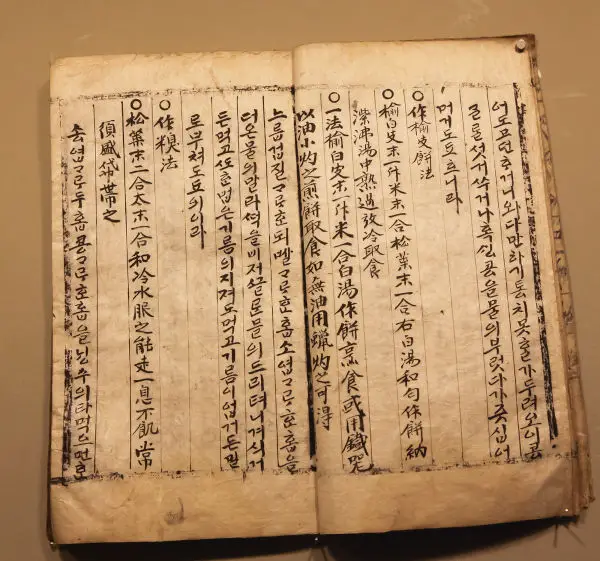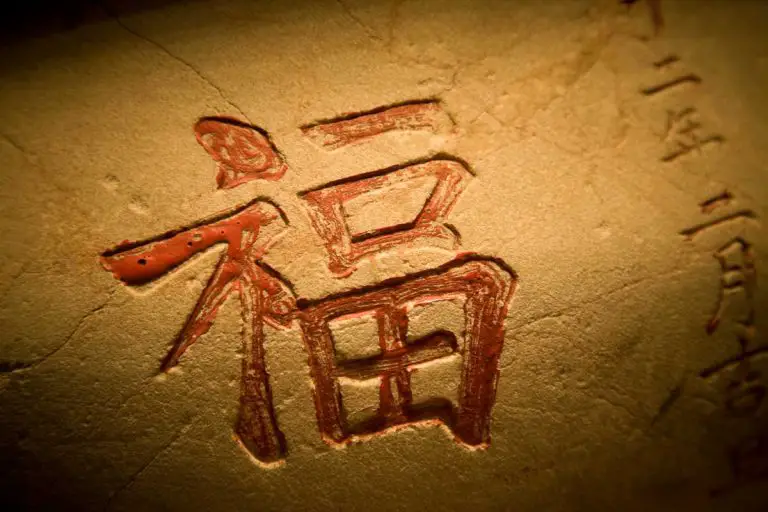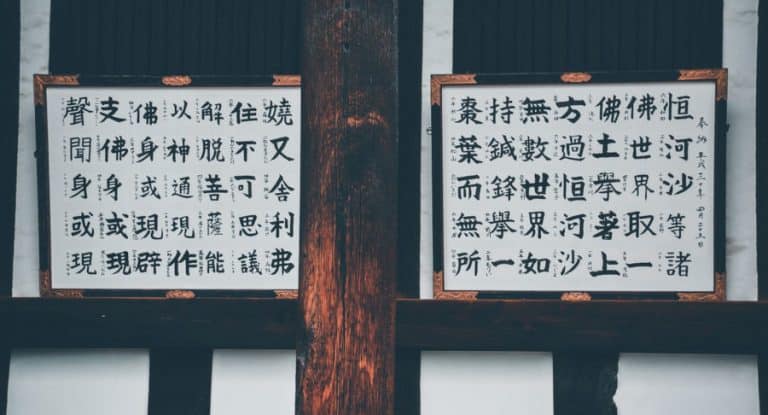Chinese is one of the oldest languages in the world. It has been around for more than 5,000 years, and in that time it has changed and grown a lot, leading to many different regional dialects and variations. Linguists still argue about where the Chinese language came from, yet there are several thoughts about how it developed and changed over time.
In this article, we will look at the beginnings of the Chinese language, how it changed over time, and how Mandarin became China’s national language.
Chinese Language Origin and Evolution
Shang dynasty (1600 BCE-1046 BCE)
One popular theory says that the Chinese language came from a proto-Sino-Tibetan language that was spoken in the Yellow River valley. This language is thought to have started around 7,000 years ago and was spoken by the first people who lived in the area.
During the Shang dynasty, this language developed into what is today known as Old Chinese (also referred to as “Archaic Chinese”).
All current Chinese dialects are inextricably linked to archaic Chinese, often known as the Old Chinese language. Nonetheless, divinatory inscriptions carved into oracle bones and tortoise shells during the Shang dynasty are what might be considered the oldest Chinese writing systems (also known as the “Oracle Bone Script” 甲骨文 🔊).
Archaic Chinese was a tonal language, which means that the meaning of words depended on the tone in which they were pronounced. Moreover, the language was very inflected, allowing for the addition of various morphemes or particles to change the meaning of a word. The use of four tones and a small number of consonants and vowels made ancient Chinese distinctive.
The Archaic Chinese period started with the writings of Confucius and Mencius. Archaic Chinese includes inscriptions on bronze artifacts, Shijing poetry, Shujing history, and parts of the Yijing.
Zhou Dynasty (1046 BCE – 256 BCE)
The transition from the Shang to the Zhou dynasty saw the Chinese language undergo further development. During the Zhou dynasty, which lasted from 1046 BCE to 256 BCE, the Old Chinese went through a series of changes. During this era, a script known as the Seal Script (zhuànshū 篆书) developed, which was defined by its strong, stylized strokes. In ancient China, this script was utilized for inscriptions on bronze pots, which were significant status and wealth symbols. Eventually, the seal script was replaced by the clerical script, which was easier to read and rounder. It was used for administrative tasks.
Han Dynasty (206 BCE–220 CE)
During the Han dynasty, a standardized script known as the Han script or Little Seal was developed and was used for both writing and printing.
It evolved into the Clerical (lìshū 隶书), Running, Draft, and Standard scripts. The Standard Script is used to create printed Chinese. Cursive or fast writing (the Running and Draft scripts) led to the use of many abbreviated characters in artistic calligraphy and in business and personal correspondence.
This writing system was also the basis for the simplified Chinese characters that are used in mainland China today.
Related reading: Fascinating Information About Chinese Characters – Opens in new tab

Tang Dynasty (618–907 CE)
During the Tang dynasty, one of the most major developments in the history of the Chinese language happened. This was a time of remarkable cultural and intellectual development in China. The language experienced a profound shift. Around this point, the language developed into what is today known as Middle Chinese.
Middle Chinese was a more sophisticated and difficult language than its predecessor. It had more consonants and vowels and a more complicated tone system with rising and falling tones. As a result, the language became more detailed and expressive, which made it the preferred language for poetry and literature.
During this time, Middle Chinese was the language of the educated elite.
Over the years, the language kept changing, giving rise to different regional dialects and forms. This was primarily owing to the fact that China was a huge country with a diverse population, and different areas developed their own distinctive dialects and speech patterns.
Song Dynasty (960–1279 CE)
During the Song dynasty, there were more changes to the Chinese language. During this period, the language became more standardized and simple, with fewer tones and a greater emphasis on standard vocabulary and grammar. This was mostly because the country needed a single language that everyone could speak and understand.
Ming Dynasty (1368–1644 CE)
Another significant change to the Chinese language occurred during the Ming period. This was a period of immense cultural and intellectual progress in China, and the language grew more standardized and homogeneous. The usage of classical Chinese increased, and it became the preferred language for formal writing and literature.
Modern Era
In the modern era, the Chinese language has kept changing and adapting to new conditions. Significant linguistic reforms, including the widespread use of simplified characters and the advocacy of a standardized variety of Mandarin called Putonghua (普通话) 🔊, were initiated with the founding of the People’s Republic of China in 1949.
Related reading: The Biggest Challenges in learning Chinese for English speakers– Open in new tab

Today
Over the ages, Chinese has experienced significant modifications, with regional dialects and variants arising in various sections of the nation. Mandarin, Wu, Yue, Min, Xiang, Gan, and Hakka are the seven major dialects of Chinese today.
- Mandarin is the official language of the Chinese mainland and is spoken by most people.
- Wu is spoken in the Shanghai area.
- Yue is widely spoken in Guangdong and Hong Kong.
- Min is spoken in Fujian province.
- Xiang is spoken in Hunan province.
- Gan is a dialect spoken in Jiangxi province.
- Hakka is spoken in southern China and Southeast Asia.
Despite the variations among these dialects, they all have Classical Chinese as their common ancestor, which is based on the Zhou dynasty’s language. Classical Chinese is a very formal and literary language that is mostly used in written form. It is distinguished by the use of complicated sentence patterns and a frequently archaic or obscure vocabulary.
Related reading: The Most Commonly Asked Questions About the Chinese Language – Opens in new tab
How Did Mandarin Become the National Language of China?
As we’ve already said, Mandarin is the official language of the People’s Republic of China, Taiwan, and Singapore. It is also one of the world’s most extensively spoken languages, with over a billion people speaking Mandarin globally. So, how did Mandarin come to be the official language of China?
Mandarin’s history as China’s national language may be traced back to the early twentieth century. China was going through a period of political and social turmoil at the time. The country was divided into several areas and provinces, each with its own distinct dialects and languages. This made contact across areas difficult and hampered the formation of a cohesive Chinese identity.
Sun Yat-sen led a revolution in 1911 that ended the Qing dynasty, which had dominated China for more than 250 years. This was the first step toward creating the Republic of China, which was done in 1912. The challenge for the new leadership was to bring the heterogeneous populace together and foster a feeling of national identity.
Language reform was one of the primary strategies used by the government to accomplish this. The Chinese authorities realized that the many dialects and languages spoken throughout the country were a substantial hurdle to communication and unification. To overcome this, they tried to promote a standardized version of the Mandarin language.
The government formed the National Language Unification Commission in 1913 with the objective of developing a uniform version of the Chinese language. Cai Yuanpei, a linguist and professor who supported the Beijing dialect of Mandarin, was in charge of the commission. Mandarin, in Cai’s opinion, should serve as the foundation for the country’s official language because it is the dialect that Chinese people speak and understand the most.

In the years that followed, the committee worked on making a standard version of Mandarin that would be the official language of the country. Their work was based on the Beijing dialect’s phonetic system, and they developed a standard set of characters using the traditional Chinese writing system. They also created the language’s standard grammar and syntax.
Guoyu, or National Language, the new standardized Mandarin, was established in 1919. It became the official language of the government and the education system, and it was taught in every school across the nation. The government also started a campaign encouraging the general population to use Mandarin.
The adoption of Mandarin as China’s national language was not without controversy. Many Chinese people spoke numerous dialects and languages and were opposed to Mandarin being the official language. Some believed it was an attempt to impose Beijing culture on the rest of the country, while others believed it was an elite language that would prevent common people from participating in national affairs.
Regardless of criticism, the government has continued to promote Mandarin as the official language of China. Mandarin grew more popular throughout the country in the years that followed. It was recognized as the official language when the People’s Republic of China was established in 1949, and it has been the national language 普通话 (pǔ tōng huà) ever since.
Related reading: “How To Travel in China Without Speaking Chinese?“
End Words
To summarize, the Chinese language has experienced considerable changes and evolution over its lengthy history. Since its early days as Old Chinese, it has developed into a sophisticated language that is spoken by people worldwide.
It remains one of the world’s most significant languages, both culturally and commercially.
Chinese is the official language of Taiwan and mainland China, and it is spoken by over a billion people globally. Given China’s recent development as a key economic power, it is also one of the most important languages for commerce and trade. As a result, studying Mandarin has become increasingly vital for individuals worldwide.
Apart from its practical use, Mandarin is a rich and intriguing language with a long cultural past. From the Tang dynasty’s poetry through the Song dynasty’s calligraphy, the Chinese language and culture have had a profound influence on the world. Chinese music, literature, and art are still studied and admired today all around the world.
Stay in Touch
 Join our newsletter by using the forms on this website or click here!
Join our newsletter by using the forms on this website or click here! Follow us on Google News
Follow us on Google News Follow us on Facebook
Follow us on Facebook
Feature Image from Depositphotos






